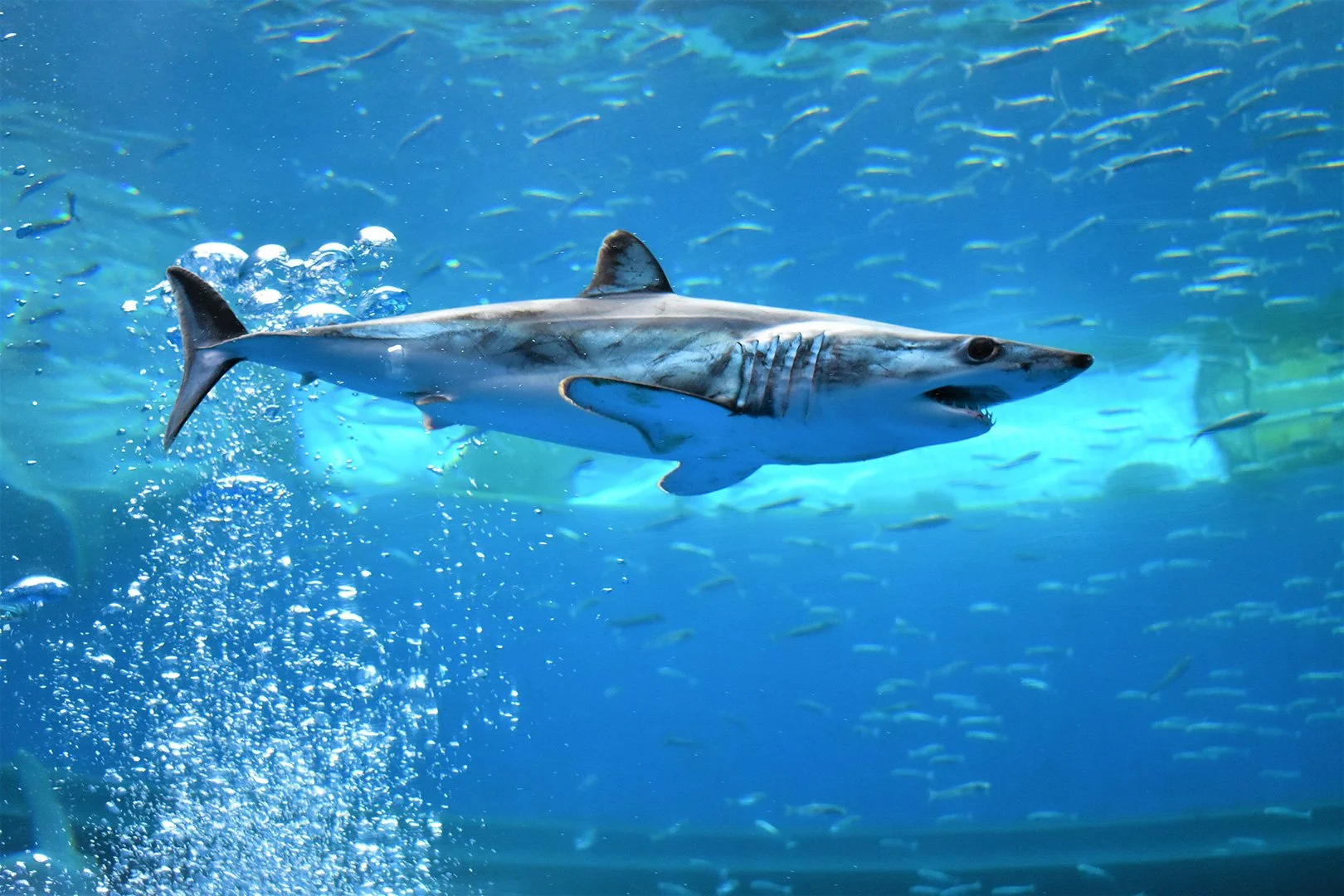Stories of the Sea - Shark Steaks and Illegal Wildlife Trade
By Safina Center Historical Journalism Fellow Raffi Khatchadourian
A shortfin mako shark swimming in an aquarium. ©出羽雀台, via Creative Commons Attribution-Share Alike 4.0 International license.
With its pointed snout, its sleek metallic-blue body, and its sophisticated biology, the North Atlantic shortfin mako shark is a marvel of evolution: an apex predator that can swim nearly fifty miles an hour, and leap as high as twenty feet out of the water when it breaches. It has also been the object of intense hunting—for its meat, or to display as trophies. In 2019, the International Union for Conservation of Nature classified it as endangered. Since 2022, it has been illegal to catch one in the United States, even though it has not yet been listed here under the Endangered Species Act.
The other day, I wanted to see if I could buy some shortfin mako steaks online. Within minutes, I found a market in New Jersey that said it was selling them; there was also a market in Raleigh, North Carolina, and another in Charleston, South Carolina. Maybe those steaks were of the Pacific shortfin mako, which is legal; there was no way to be sure. (And there was no way to search for instances where the steaks might be mislabeled as swordfish.) But finding mako wasn’t hard.
The experiment came to mind after reading an interesting study, spearheaded at the University of Miami—published this April, in Biological Conservation—that used a Web crawler to identify sites that are openly trading in threatened or endangered animals. After fifteen weeks of searching, in 2018, the algorithms found “10,699 unique listings selling body parts or eggs of threatened species.” Eighteen of the species were listed on Appendix I of the Convention on International Trade in Endangered Species of Wild Fauna and Flora (CITES)—the most endangered, whose trade is banned among signatory countries. (Gorillas and giant pandas are listed in Appendix I, while mako sharks are listed in Appendix II, which puts restrictions on their trade.)
In the University of Miami study, according to a press release about it, nine of the top ten threatened species that the algorithm identified in online sale listings were for sharks, and the “shortfin mako sharks turned out to be the most common sold of the threatened species.”
Since the research was conducted, the university and its partners have said that they have been planning to develop more tools to identify endangered species for sale online. A similar system has also been under development in China—a collaboration between the International Fund for Animal Welfare, and Baidu, the search engine and internet-services company. It’s called AI Guardian, and it claims to be eighty-six percent accurate “in detecting illegal wildlife trade products online and submitting them for prosecution.” (I could find no peer-review study about this system, and so its claim about accuracy, for the moment, must be taken on faith.) At a local level, AI might also be used to combat wildlife crimes in other ways, as this Nigerian paper from 2023 explores.
According to Interpol, wildlife trafficking is a twenty-billion-dollar industry. “Society has underestimated the threat posed by the trade in wildlife,” Jennifer Jacquet, an author of the Miami study, explained in the release. “But direct exploitation of animals is still the No. 1 driver of species decline. So, as much as we worry about climate change and habitat degradation, we still directly kill animals for both consumption and for the trade in their parts, and it’s a serious problem.”
For more mako shark reading, check out this article by Sydney Randall and Carl Safina.

